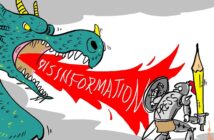If you’re a fan of Agatha Christie Dr Anthony Howell, Senior Lecturer in English at The Open University, and the author of the free OpenLearn short course on the Queen of Crime has picked out five brilliant detective-fiction novels by other authors. Here’s his list.
Almost fifty years after her death Agatha Christie’s books and the films her work has spawned on the big and small screens still command our attention.
Earlier this year, the BBC announced the commissioning of a new series based on her 1944 novel Towards Zero, additionally, the success of Kenneth’s Branagh’s Poirot adaptations, such as last year’s A Haunting in Venice, prove her source material remains a box-office magnet.
So if you’re a fan of her work and want to explore more detective fiction on the page by other authors, here are five recommendations that might appeal.
- Strong Poison by Dorothy Sayers (published by Gollancz, 1930)
As one of Christie’s contemporaries, featured in the Golden Age of Detective fiction on OpenLearn, Dorothy Sayers and her fictional aristocratic sleuth Lord Peter Wimsey are an ideal place to start.
In Wimsey’s sixth outing, Strong Poison showcases the best qualities of the series. The accused, Harriet Vane, is given a second chance to prove her innocence in the case of her ex-lover’s poisoning.
Wimsey’s eccentric method of detection will be jarring at first for those used to the carefully controlled logic of Hercule Poriot or the shrewd observational style of Miss Jane Marple. With seemingly unlimited funds and an amateur sleuth’s enthusiasm, he solves crimes for his own amusement or, in the case of Strong Poison, because of his attraction to Miss Vane.
The ensemble cast and comic dialogue will at times remind readers more of a P.G. Wodehouse caper but the crime, and its solution, are as devilishly clever as Christie at her best, although you might need to visit a second-hand book sellers to find it, or seek out the Kindle edition.
- Northanger Abbey by Jane Austen (published by John Murray, 1817)
As well as exploring the Golden Age, why not look further into the past to discover where it all began? You might not think of Jane Austen as a predecessor of Christie’s but Northanger Abbey is an important link between the Gothic novel and modern crime fiction.
Gothic romances, set in the late 18th century that were the backdrop of Austen’s work, often featured troubling mysteries to be solved by would-be detective-heroines, like the socially naïve Catherine Morland in this novel.
By the time of the British Regency, the genre had become hackneyed yet this novel is a witty pastiche of the ‘explained supernatural’ style. It is also an example of a narrative’s self-awareness in the act of investigation, which we often see in Christie’s own work, where characters tend to be fans of detective fiction and refer to its conventions in the midst of a case.
- The Name of the Rose by Umberto Eco (Harcourt, 1983)
Imagine a Christie-style whodunit set in a mediaeval Italian monastery, where monks are suddenly dying in mysterious circumstances. It was published in Eco’s native Italian in 1980 and translated into English in 1983.
This unlikely bestseller was adapted into a film starring Sean Connery and Christian Slater later in the same decade. On its surface, the story references Sherlock Holmes, with its protagonist, William of Baskerville, taking his name from one of Conan Doyle’s best-known tales.
But Eco’s crime-solving monk perhaps owes more to Christie’s Marple; both characters make informed guesses based on their knowledge of closed systems of human behaviour (whether in villages or monasteries) and are assumed to be acting on intuition.
- The Cuckoo’s Calling by Robert Galbraith (Sphere Books, 2013)
Galbraith is of course the pen name used by J.K. Rowling for her Strike series of detective novels. In many ways, Rowling is the best candidate for an heir to Christie, being the crime author who comes closest in terms of stratospheric sales (the Harry Potter books are largely structured as whodunits, after all).
Both Rowling and Christie have a seemingly effortless style of prose with an underlying meticulousness in the construction of clue-puzzle narratives few can imitate.
The Cuckoo’s Calling introduces both the eponymous detective, Cormoran Strike, and Robin Ellacott, who arrives as an office temp and ends up assisting in the investigation of a supermodel’s death, apparently by suicide. Strike’s first outing is a brilliant fusion of the British and American traditions of the private-eye narrative.
- The Selected Writings of Edgar Allan Poe by Edgar Allan Poe (W.W. Norton & Company, 2004)
Finally, perhaps the most important of Christie’s forebears in the art of literary detection: Edgar Allan Poe. I’ve recommended the Norton Critical Edition of his Selected Writings, which collects his crime fiction alongside the gothic tales and poetry.
With his method of ratiocination (logical problem solving), Parisian amateur detective Auguste Dupin is maybe the earliest forerunner to the likes of Christie’s Poirot.
Dupin is introduced in “The Murders in the Rue Morgue” (1841) and reaches his zenith in the ingenious tale of “The Purloined Letter” (1844), where he assists in a case of blackmail rather than murder. Other short stories featured here will appeal to fans of Christie, too. Take, for example, Poe’s cryptographic treasure-hunt story “The Gold-Bug” (1843), which broke new ground in the use of codes and clues.
Picture created using Microsoft Copilot AI



